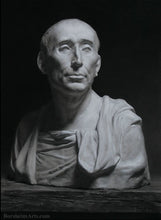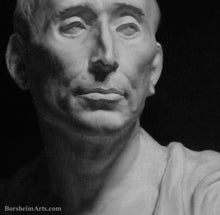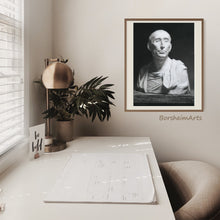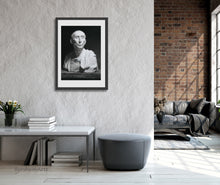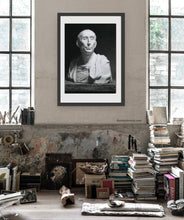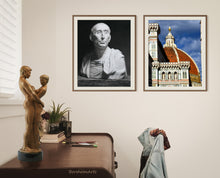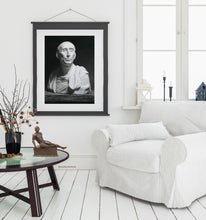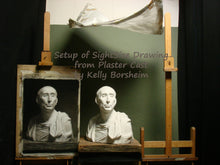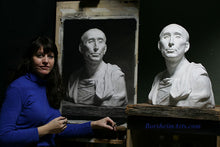
- Charcoal and Pastel on Gray Paper
- 25 x 18 inches (64 x 46 cm)
- Available
- Prints available, too.
Niccolò da Uzzano, after Donatello
Renaissance Florence, Italy, was the center of banking, ruled by the Medici family of bankers. Niccolo' da Uzzano was a Florentine political figure who protected the famous Medici. He commissioned fresco and paintings and tried to keep the peace between rival parties. A terra-cotta bust of him from around 1430-1432 is attributed to the great sculptor Donatello. Today, the original artwork resides in the Bargello National Sculpture Museum in Florence, Italy.
I created this portrait of the man I was told was the banker of the Medicis using a plaster cast as my model. I drew with charcoal on a grey Italian paper, and then added white pastel for the lighter areas. This finished drawing represents months of work, minimum 3 hours per day: An elegant portrait that I hope to inspire businessmen, students, and art lovers alike.

Above is an image of the original artwork. Looking at this image, one must wonder if the gesso (plaster cast) was made incorrectly. The head appears to be bent back in a more expressive way in Donatello's sculpture. This sculpture stands out in the fabulous collection of the Bargello National Sculpture Museum on Via Ghibellina in Florence and is one of Kelly's favorites.
The sight-size method of drawing was used (more about that below). This is my first drawing using white pastel on a grey paper (previous drawing were done with light paper using only charcoal to darken tones).
The Sight-Size Drawing Process
Portrait of Niccolò da Uzzano" (After Donatello) ~ Sight-Size Portrait Art


"Portrait of Niccolò da Uzzano" (After Donatello) - Sight-Size Portrait Art
Some of the basic concepts of the sight-size method of drawing are described on the page exhibiting Kelly's Écorché ~ The Archer. In this first image, you can see that the larger and more significant shapes of light and dark have been determined and the one averaged dark tone has been drawn onto the grey paper. More dark will be added, as well as some dark areas being lightened. But this is how it starts.
In order to maximize the full tonal range possible in the media used, one must establish the darkest dark and the whitest white. Here whites are added with Rembrandt-brand pastel. Grey Italian paper that will be seen without pastel or charcoal in just the right tonal places.

Although this setup may look simple, it takes a long time to secure the type of lighting desired. The gesso (plaster cast) is almost solid white. So there are quite a lot of possible lighting effects one can achieve. That is also a reason that one does not change the setup at all once you get past a certain early stage of the shape drawing. The lighting greatly determines the shapes of the light and the dark regions.
I love this drawing and it was a turning point for me, yet also felt as if I were coming home. My first real art love was black and white photography.










